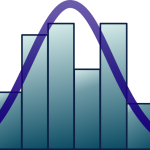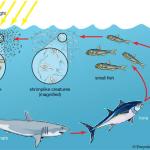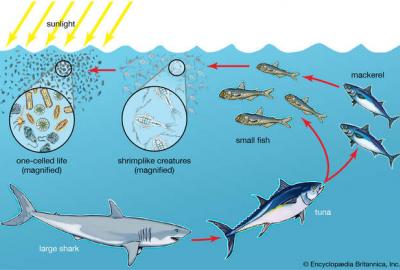Applied Hierarchical Modeling for effective monitoring and conservation of Marine Megafauna: sampling design, model development and inference
A broad range of marine species have been dubbed marine megafauna, however providing a precise definition of this term is difficult. It is not a taxonomically defined group, as it includes sea mammals, birds, reptiles, large fish and elasmobranchs. Marine megafauna species are large vertebrates that depend on marine resources for their food. These mobile species are generally at the top of their trophic food webs and have none or few predators. From the tiny storm-petrel to the gigantic blue whale, this group is biologically diverse and brings together species which cannot be strictly defined by morphological or physiological similarities. Rather, our perception of marine megafauna as a coherent group is based on ecological similarities and shared conservation issues. These species are exposed to a myriad of threats and generally show limited resilience due to their intrinsic life history traits such low fecundity rates and high longevity, which often limit the capacity of collapsed populations to quickly recover. Consequently, they share common conservation challenges, and their current conservation status often results from pressures of the last century cumulated with current pressures.
Beyond species themselves, marine megafauna are a key element of many marine conservation strategies. Including some of the most charismatic marine species, large marine vertebrates are generally used as flagships to mobilise society at large on conservation issues. Moreover, they can function as umbrella species due to their large home ranges and high trophic level. Indeed, conservation measures focusing upon marine megafauna often benefit lower trophic level species, positively impacting marine habitat protection. They also have the potential to act as sentinel species and inform the ecological status of other less visible compartments of marine ecosystems. Focusing on marine megafauna as target of conservation strategies is thus rational and ecologically motivated.
However, despite their large body size, marine megafauna can be very elusive, undermining our abilities to document crucial parameters for effective conservation such as population sizes (abundance), distribution, vital rates (fecundity, survival or mortality) etc…
The presence or absence of a species across a set of spatial units is a fundamental concept in ecology, conservation biology and wildlife management (e.g., species range or distribution changes, habitat use, resource selection functions). An important sampling issue, however, is that a species may not always be detected when present at a spatial unit. Unaccounted for, ‘false absences’ can lead to misleading inferences about patterns and dynamics of species occurrence, and the factors that influence them. Similarly, abundance and population vital rates (mortality, breeding frequency, dispersal among habitat ‘patches’ or suitable areas) are fundamental quantities required to address questions about population dynamics and assess its ‘health’ state. In this context, imperfect detectability of individuals during sampling sessions can also plague inferences about patterns and processes underlying population dynamics.
Course Contents
-
This course will cover the design of sampling protocols and the modeling of species occurrence and population processes in marine megafauna in classical situations where the detectability of species or individuals is less than one, with a particular emphasis on marine mammals and seabirds.
- The course will address the estimation of quantities needed in the modeling effort, and the application of these estimates and models to monitoring and conservation problems.
- Students will be introduced to the models through worked examples, with a particular emphasis on state-of-the-art inference techniques in the Bayesian framework.
- The main software that will be used is R (to handle data) and JAGS (to fit models to real-life datasets and estimate parameters of interests).
- All models that will be detailed fall under the umbrella of ‘hierarchical models’ with latent parameters.
- The conceptual and philosophical foundations of such models will be briefly detailed to enable users to build a subsequent in-depth understanding with regular practice.
Final Competencies
1 Students will know how to set up a sampling design that is appropriate for an ecological or conservation question.
2 Students will know how to format data for ecological analyses, and how to design reproducible analyses.
3 Students will know what is a model (aka the data-generating mechanism) in ecology; what are the sampling process and the ecological process of interest; how to set up a model that reflect both fieldwork and nature to obtain accurate inferences.
4 Students will know how to relate modeling with conservation-relevant quantities such as abundance, distribution, vital rates and their change over space and time.
Further course information can be found here:https://studiekiezer.ugent.be/studiefiche/en/C004303/2021






